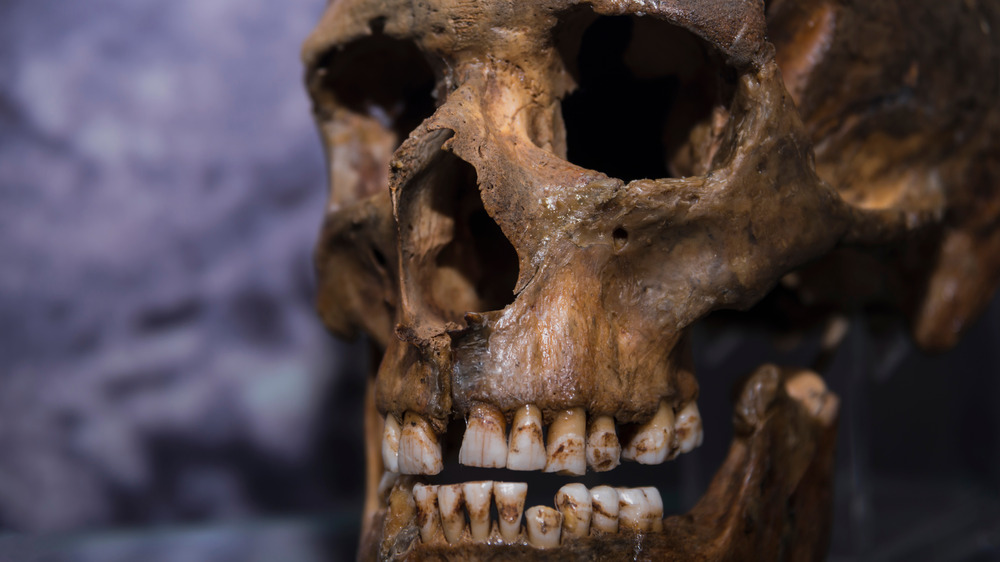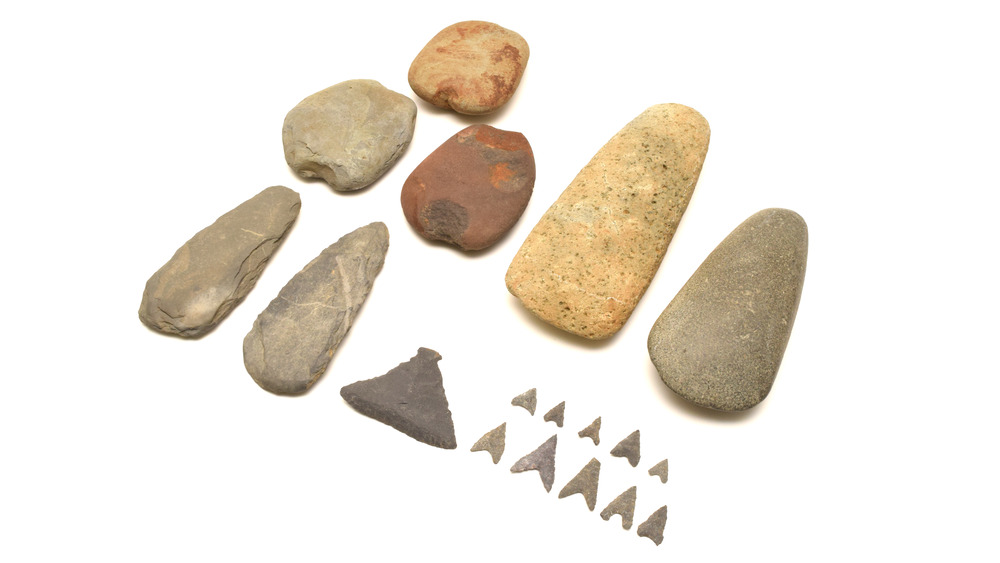The Surprising Thing Once Used As An Ancient Dental Tool
Most people can probably agree that it's not fun to go to the dentist. With all those fingers and sharp objects poking around in your mouth, just about any place in the world is more fun than sitting in the dentist's chair. However, it may or may not be of consolation to know that it used to be much, much worse.
Before the invention of modern dental instruments, oral care was rudimentary, to say the least. Ancient humans had to make do with whatever tools they had on hand, which included a common item that can be found on the ground just about anywhere: rocks.
University of Kansas paleoanthropologist David Frayer collaborated with his dentist, Joe Gatti, to study the teeth that were among the Neanderthal fossils found in the Krapina cave in Croatia. They found evidence that showed early humans had used primitive, handmade toothpicks to help treat dental issues such as impacted molars, fractured cusps, and mouth pain.
The 130,000 year-old teeth showed grooves, scratches, and markings that were likely caused by the Neanderthal using sharpened bones or reeds to get at the affected tooth. "The Neanderthal was presumably trying to treat itself ... probing the space between the teeth to get at that twisted molar. Anybody who has ever had an impacted tooth knows what that's like," Frayer told the Washington Post.
Early humans used sharpened stone tools to treat tooth decay, cavities, and infections
This practice continued for thousands of years. A preserved molar from 14,000 years ago showed evidence of an infection that had been treated intentionally with sharpened flint tools, according to IFL Science. "The discovery suggests ... that in the Upper Palaeolithic era, humans were aware of the damaging effects of cavity infections and of the necessity of treating them, using stone instruments to remove the infected material and to clean out the cavity," lead researcher Stefano Benazzi explained.
Another discovery at a site in Italy showed 13,000-year-old teeth whose decayed or infected matter had been scooped out by a primitive handheld dental tool. While sharpened stones and sticks were used for scraping teeth, early humans had another solution for filling them back up. According to Live Science, evidence found in ancient skulls shows that early humans may have used bitumen, a form of tar — basically, asphalt, says Investopedia — to fill in the dental cavities after they had been scraped out.
So the next time you go to the dentist, you can console yourself with the thought that at least the professional dentist will be filling your mouth with modern tools and sterilized equipment, not rocks and tar that were found on the ground.

